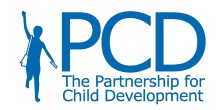 Impact Assessments
Impact Assessments
Evaluation studies which look at the impact of a programme are important for helping establish a cause-effect relationship for an intervention and can be used to inform programme improvement and future funding allocations. When evaluating school feeding programmes these studies assess the education and nutritional benefits, and associated trade-offs of different programmatic designs.
Impact Evaluations
School feeding impact evaluations aim to measure the differences in the outcomes attributable to school feeding. This involves comparing the outcomes for beneficiaries of school feeding to the outcomes from a control group not receiving the intervention. To control for pre-programme characteristics in the beneficiary population, it is usually necessary to collect data before the school feeding intervention begins and after a period of implementation.
In order to capture the different levels and types of impact, school feeding evaluations can follow a mixed method approach, meaning that both qualitative and quantitative data is collected. Instruments used in the evaluations would also generally collect information on context, programme and beneficiary characteristics to enable an analysis of the treatment effect within different groups of interest. Quantitative data is collected at household and school level.
Household and School surveys
The pupil household instrument generally includes a household roster and questions exploring issues including the household socio-economic background and children school participation. Nutritional status can also be assessed for all children in the households and their mothers or primary female caretakers, including data collection on height and weight, and measure of haemoglobin status. The school survey will generally cover outcome and process dimensions, including educational indicators, particularly enrolment and attendance, as well as indicators exploring the issue of short-term hunger in the classroom.
Evaluation designs
The gold standard for impact evaluations is the randomised control trial (RCT), where the experimental design is achieved by randomly assigning similarly eligible children communities to the intervention and control groups. Children randomly assigned to the control group can then be brought into the programme in subsequent years. Statistical tests are generally used to determine possible bias from household selection effects and sampling errors. This approach accounts for selection bias, or correlations between beneficiary status and impact variables, thus enabling a causal interpretation on “treatment” estimates.
Insights on the educational benefits of school feeding can also be gained from programme evaluations of a more operational, and thus less rigorous, nature than randomised control trials. Though quasi-experimental design evaluations may still provide bias estimates of programme effect they provide the next best possible option when randomised design is not feasible. In quasi-experimental designs, school feeding beneficiaries are compared to non-randomly assigned controls that do not receive school feeding. Evaluations where possible should also leverage existing nationally representative data taken from regular population-based surveys.
Key Resources
- Broadening the range of designs for impact evaluations DFID
- Conducting quality impact evaluations under budget time and data constraints
- Improving lives through impact evaluation
- A systematic review of agricultural interventions to improve nutritional status of children
- Cost efficiency of providing food through schools
- Monitoring and evaluation of SHN programs a participative review
- Methodologies to evaluate the impact of large scale nutrition programs




